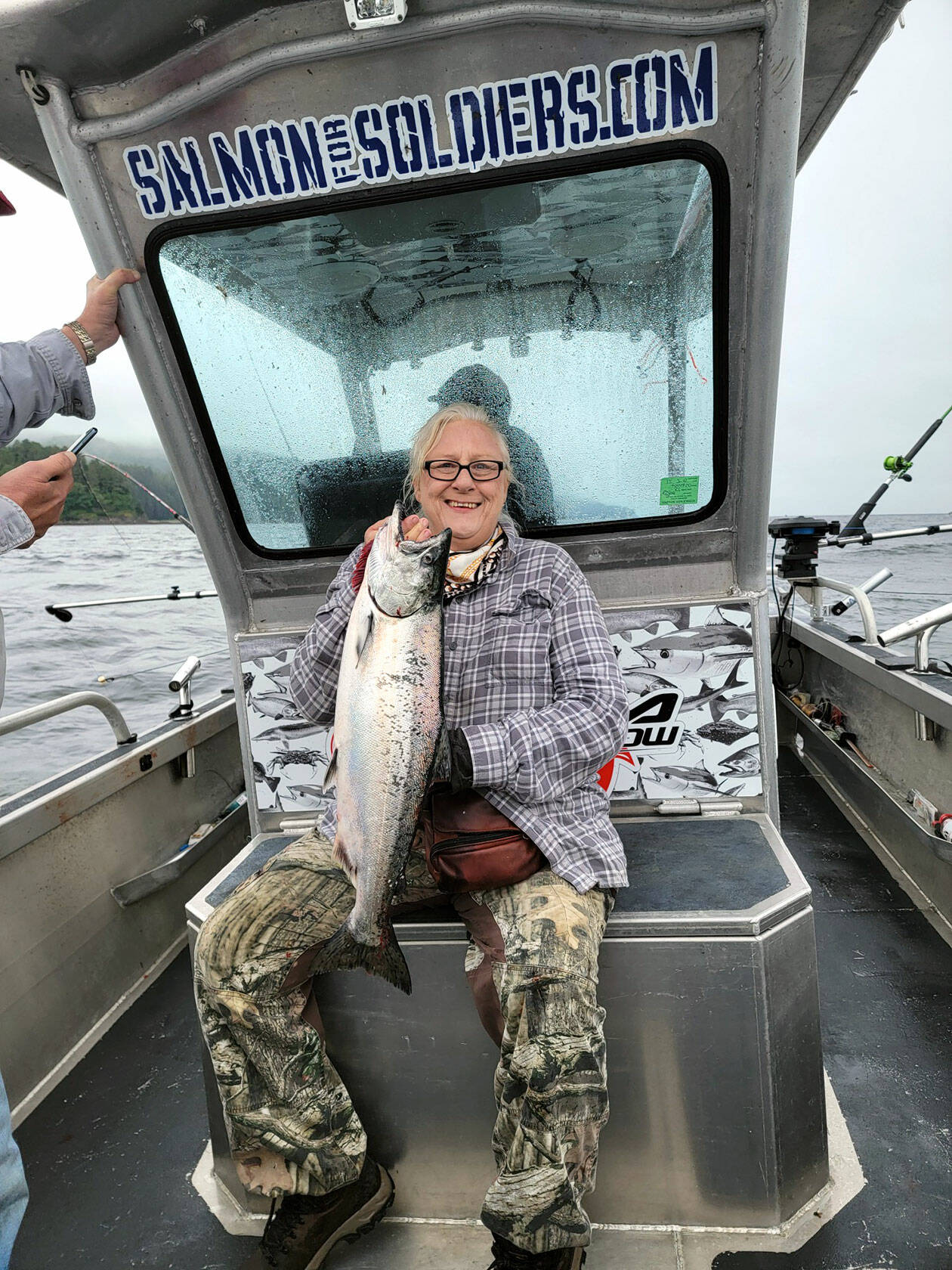Continued cuts in recreational chinook fishing opportunity once again impact Marine Area 9 (Admiralty Inlet), while improved coho returns will provide some improved Pacific Ocean fishing.
That’s the main takeaway from the 2022-23 salmon fishing seasons, cooperatively developed by the state Department of Fish and Wildlife and treaty tribal co-managers, and tentatively set Tuesday afternoon at a week-long Pacific Fishery Management Council meeting held online and in-person in Seattle.
“We continue to see low returns of some stocks across Washington, especially chinook stocks, and our first priority is to craft fisheries that conserve and aid recovery of those runs,” said Fish and Wildlife Director Kelly Susewind. “At the same time, there are bright spots in this year’s forecast, and we developed what we believe are some novel ways to maximize opportunities in areas where healthy runs might mingle with those weaker stocks.”
Season recommendations now move forward for approval by the National Marine Fisheries Service and final rulemaking, including additional opportunity for public comment and consideration of those comments.
Ocean fisheries
Coho are expected to return in large numbers to the Washington coast in 2022, and in coastal marine areas, coho quotas reflect those improved forecasts. Fishery managers agreed during this week’s PFMC meeting to recreational ocean quotas of 27,000 chinook compared to 27,250 in 2021 and 168,000 marked coho, more than double the 2021 coho quota of 70,000.
LaPush (Marine Area 3) and Neah Bay (Marine Area 4) will open for salmon retention beginning June 18, followed by Ilwaco (Marine Area 1) on June 25 and Westport-Ocean Shores (Marine Area 2) on July 2.
All areas are scheduled to remain open until Sept. 30 or until quotas are met, with species and size restrictions dependent on the area.
Puget Sound
Will this be the final chance to catch a summer king at Midchannel Bank? Continued declines in recreational opportunity suggest Marine Area 9’s days are numbered.
This year, the WDFW states that low returns of Stillaguamish River chinook are expected to continue, affecting fisheries across Puget Sound. Because of this, a scant three-day hatchery king and coho fishery is planned July 14-16 in Marine Area 9 and 7 (San Juan Islands).
A coho-only fishery will follow in those areas beginning Aug. 16.
“Strong catch rates and fishing pressure led to some early closures in these areas last year, and we wanted to make sure we do not exceed our catch allocations in 2022,” said Kyle Adicks, intergovernmental salmon manager with Fish and Wildlife. “We heard from many anglers that they wanted an opportunity to fish in July in these areas, and this offers some opportunity while still hopefully preserving the chance to fish on what’s expected to be a solid coho run later in the summer.”
Winter chinook fisheries will again be limited in Puget Sound in 2022-23, with some chinook retention opportunity available in November and December in Marine Area 11 (Tacoma-Vashon Island), February and March in Marine Area 10 (Seattle-Bremerton) and March and April in Marine Area 5 (Sekiu).
The continued absence of winter blackmouth fisheries off Marine Area 6, 7 and 9 prove that if removed from the rule books, these recreational fisheries are not likely to return … ever.
Most Puget Sound marine areas will once again open for the summer season beginning in July or August, with June openers currently planned for Marine Areas 10 and 11.
For more information, visit wdfw.wa.gov/nof.
________
Sports reporter Michael Carman can be contacted at mcarman@peninsuladailynews.com.

